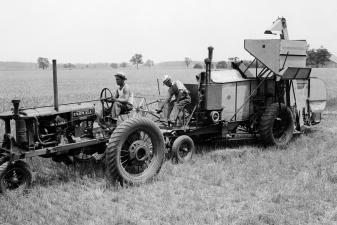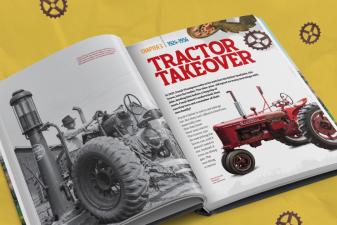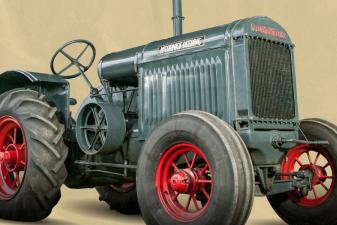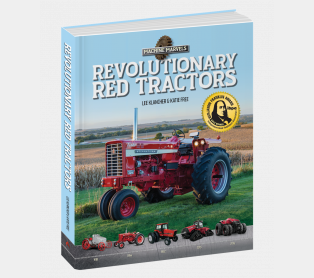Precision Farming

The following excerpt is from Revolutionary Red Tractors, an ideal book for young readers fascinated with machinery as well as for anyone who wants to learn more about the hardworking people and the machines that feed our world! In this excerpt, 13-year-old Hannah and her family use technology to help work the farm.
Thirteen-year-old Hannah hears her dad shouting, “We need to finish the harvest, now!”
They’ve already delayed harvesting the soybeans for a few weeks because of rain. Wet soybeans get crushed by the combine and don’t store as well. Plus, even though their combine can handle rough conditions, it’s harder to cut wet plant stems. But Hannah’s family can’t wait any longer. There’s a snowstorm coming in overnight. The snow could knock over the soybean crops and make the entire year a loss. Hannah runs out with her dad to hook up their four-wheel-drive Steiger 480 tractor to the grain cart. Her mom has already hopped into the combine and is moving it toward the fields.
They work all day, starting with the field that usually has the highest yields. Thankfully, they can manually change the combine settings to harvest the soybeans more gently. That way, the beans won’t shatter during the threshing process. By the end of the day, they have covered about 75 percent of the entire farm. Technology helped them focus on the areas that grew more soybeans. Despite the weather, this year’s harvest is as good as last year’s!
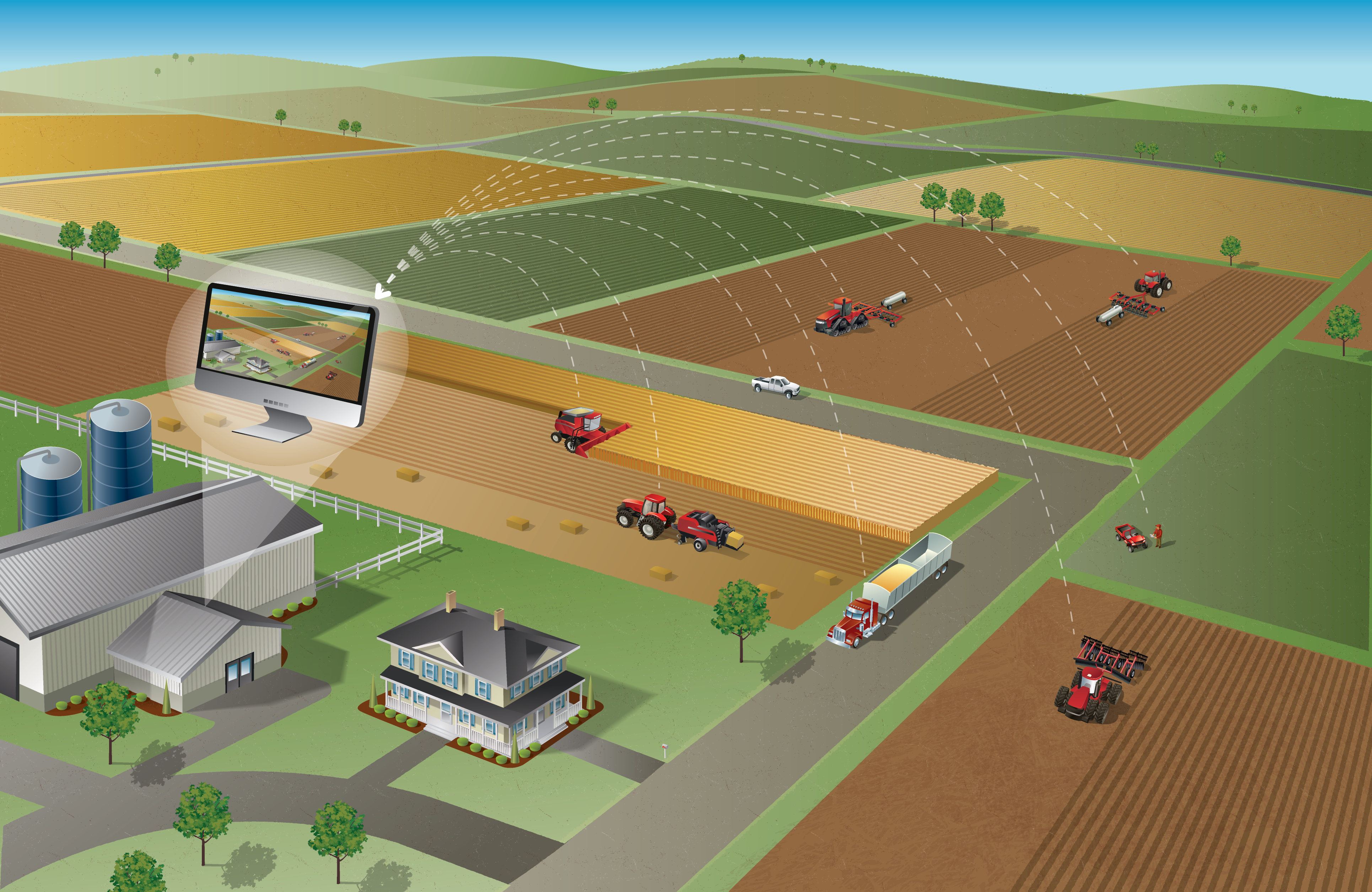
Technology has made harvesting much more efficient. After the 1980s, when farmers were struggling to make money, farming management became very important. Farmers needed a new strategy for growing crops to increase their yields while spending less on seeds, fertilizer, and pesticides.
Increasingly, they turned to precision farming. Precision farming uses GPS, data, satellite images, and computers to build a plan for farming precise locations in the fields. All the data combined tells farmers how much water, fertilizer, and pesticides to use. By understanding more about what’s going into the crop, farmers can grow more in a smaller space. They can also use fewer pesticides and less fertilizer, which saves money and helps the environment.
Case IH was a pioneer of precision farming. It launched its Advanced Farming Systems in 1995. At first, the system displayed a map of crop yields on farms. The system calculated this by combining GPS data with how many bushels of grain the combine harvested. The map of yields helped farmers understand their crops and plan for the next year. For example, if one section of a field did worse than expected, a farmer could adjust the amount of fertilizer used for next year. By the end of 1997, the team had a system that controlled applications of seeds and fertilizer.
The Advanced Farming Systems feature is still offered today. Year after year, it keeps track of how much fertilizer, seeds, and pesticides are used. The accuracy is within an inch! Based on how well the crops grow, the system makes changes to next season’s farming plan. Today, Case IH also offers precision planting. The system remembers where it has planted seeds. If the tractor rolls over that area, parts of the planter shut off. This prevents double planting. Besides wasting seeds, double planting lowers yields because crowded plants don’t grow as well as well-spaced plants.
Hannah’s family uses Advanced Farming Systems. She loves keeping track of which new features are available each year. Someday, she hopes to help farmers set up precision planting systems.
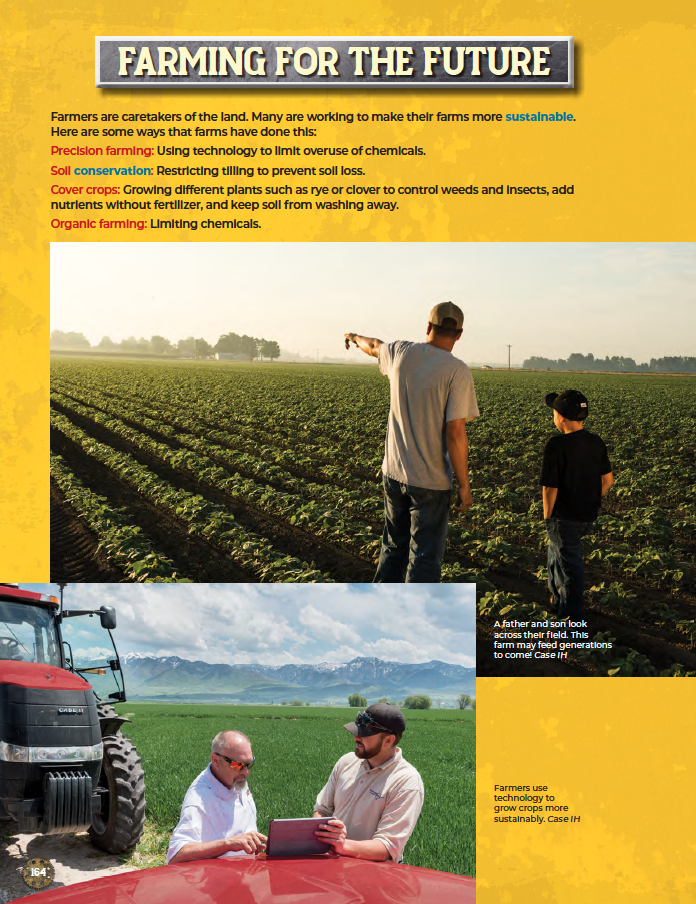
Check out Revolutionary Red Tractors for more!


